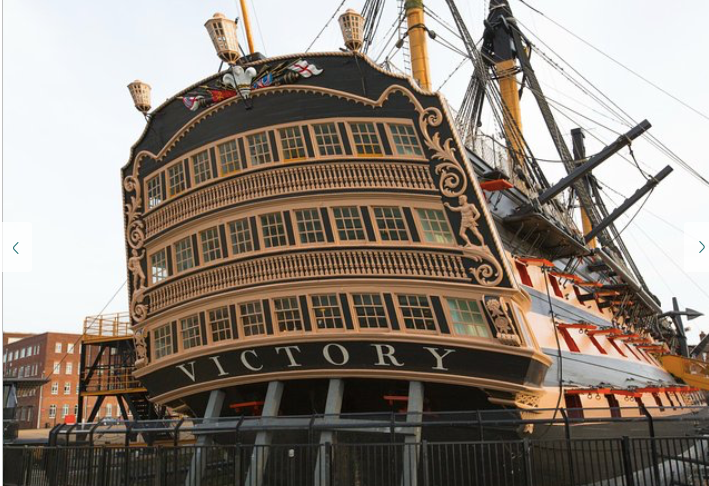Pěkný příspěvek. Byl jsem se v ní podívat je to super prohlídka a je obrovská.👍👍👍
7 May 1765 HMS Victory was launched
Categories: War at sea , Calendar

An incredible 255 HMS Victory's are in the service of the British Navy. She took part in both the Battle of Trafgar and the Battle of Cape St Vincent. She was launched on May 7, 1765.
The order for the construction of HMS Victory was signed on 7 July 1759. Preparations began almost immediately, with the first wooden timbers for the structure being gathered at Old Single Dock on 23 July, which is also cited as the official day on which actual construction began. This symbolic moment was even attended by William Pitt the Elder, who was a leading figure in the British government and became famous during his tenure during the Seven Years' War.
It was because of this conflict that work was suspended after the workers had built the skeleton of the ship. It was not until 7 May 1765 that HMS Victory was fully completed. She could travel at speeds of up to 17 kilometres per hour, with a crew of 850 men. She is almost 16 metres wide, 69 metres long. She had a rich armament of 44 twelve-pounder guns, 28 twenty-four-pounder guns, 30 thirty-two-pounder guns and two 68-pounder cannon.
Initially assigned to the reserve fleet, she was not to go immediately into battle. This historic moment did not come until 1778, when she became the flagship of the British admiral and nobleman Augustus Keppel. After the Battle of Cape St. Vincent, she returned to Chatham, where she underwent extensive repairs before returning to sea as the flagship of British naval commander Hotaria Nelson, who is considered a national hero.
HMS Victory was involved in the Battle of Trafalgar. At the time, the crew consisted of 821 men, each of whom had an important role on the ship, such as controlling weapons and the like. They were paid according to their skills and experience. Working at sea was dangerous. Even so, sea duty was attractive to many.
Britain won the Battle of Trafalgar, although Admiral Nelson was killed. Napoleonic France, which was planning to attack Britain and its naval fleet in order to gain world domination of the oceans, also suffered heavy losses. However, the end of the Napoleonic Wars in 1815, in turn, secured Britain's position as a global superpower, contributing greatly to the development of the 'modern' world as we know it today.
HMS Victory remained active after the Battle of Trafalgar until 1812, after which she was anchored at Portsmouth. The Navy used her as a training ship. But over time she fell into disrepair. But in 1928, the UK completed a modernisation. Today she serves as a maritime museum. But she's still listed as the First Sea Lord's flagship.
Sources: https://thedockyard.co.uk/, www.hms-victory.com, www.viator.com
The article is included in categories:



